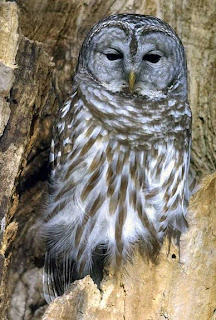Zoogeographical Realms
Faunal regions were described 100 years ago by Alfred Wallace. Although these boundaries aren't crisp, they seem to be valid units. Most birds are restricted on one or another realm. See if you can find some of the endemic families in each realm.
The Palearctic and Nearctic are the most similar (and are sometimes called the Holarctic). This is because 1) Eocene land bridge is recent; 2) birds here are generalists here and good at dispersal; 3) birds here cold adapted.
The Neotropics are by far the richest: most endemic families. The region has long been isolated creating many opportunities for adaptive radiation. The Andes also present numerous opportunities for isolation. During periods of glaciation, the lowland jungle shrank into isolated islands, also permitting speciation of bird populations. (African lowland forests much more restricted and have provided less opportunity for speciation.)
| Realm | # species | # familes | endemic families |
| Australian | 900 | 64 | 13 |
| Oriental | 960 | 66 | 1 |
| Ethiopian | 1550 | 73 | 6 |
| Palearctic | 1025 | 69 | 1 |
| Nearctic | 750 | 62 | 1 |
| Neotropical | 3100 | 86 | 31 |
The Palearctic and Nearctic are the most similar (and are sometimes called the Holarctic). This is because 1) Eocene land bridge is recent; 2) birds here are generalists here and good at dispersal; 3) birds here cold adapted.
The Neotropics are by far the richest: most endemic families. The region has long been isolated creating many opportunities for adaptive radiation. The Andes also present numerous opportunities for isolation. During periods of glaciation, the lowland jungle shrank into isolated islands, also permitting speciation of bird populations. (African lowland forests much more restricted and have provided less opportunity for speciation.)
American Dipper




Comments
Post a Comment